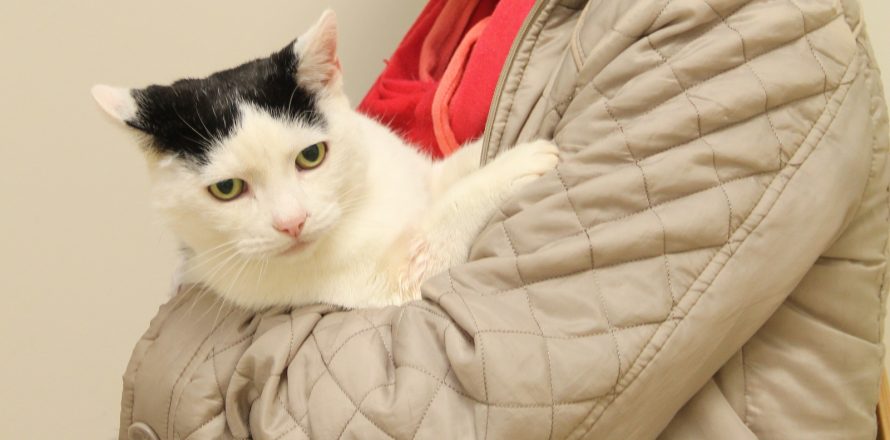The change to Inky happened gradually, over a few months. She had always been an easy going, placid animal who had got on well with other cats. But in the summer of 2013, Elaine noticed that she started to get agitated, especially when there were other cats nearby. She chased them around madly, as if she was feeling irritated. At the same time, her eating habits changed: she became fussy about her usual cat food, but ravenously hungry for anything on human plates. She even jumped onto the table to steal food, something that she had never done before. She developed a particular passion for fish: if a can of tuna was opened, she’d be at Elaine’s feet, pawing at her legs asking for a taste. When Inky began to lose weight, Elaine felt that there must be some medical reason for the change in her personality and behaviour, so she brought her to see me.
When I examined Inky, there were three issues. First, her heart rate was over 200 per minute, much faster than normal. Second, her breathing rate was also too fast, at over 30 per minute. And third, I could feel a small hard bump on the underside of her neck, like a frozen pea beneath the skin. The lump was in the same location as her thyroid gland. I was almost certain that Inky had a tumour on her thyroid gland which was causing all of the other changes that Elaine had noticed. Thyroid tumours in cats are usually benign, but they produce extra thyroid hormones which have a profound effect on the body: a condition called hyper-thyroidism. I took a blood sample to measure Inky’s thyroid hormones and the result came back confirming what I’d suspected. I also took her blood pressure (using an inflatable arm cuff, just like in humans) and I was not surprised to find that she had high blood pressure: it’s a common side effect of elevated thyroid hormones.
The good news was that Inky’s condition was easy to treat. A daily tablet was needed to keep her blood pressure in check, while there were several ways of dealing with the thyroid tumour. Surgery to remove it was possible, but Elaine was wary of this because of her age. A special form of radiation treatment is also possible, but it’s costly. If she had been an indoor-only cat, she could have been treated with a prescription-only low iodine diet to dampen down her thyroid hormone levels, but she enjoys going out and about, so there was no guarantee that she’d stick to the special diet. Elaine chose the final option: a daily tablet to depress her body’s thyroid hormone production.
For some cat owners, giving medication to their pet every day would be a nightmare. For Elaine, it’s been easy: Inky likes tuna so much that she simply needs to hide the tablets in a teaspoonful of the strong-smelling fish. Inky happily munches through it, not realising that she’s taking her medication. After she’d been on the tablets for a few weeks, Elaine could easily tell that the drugs were working: Inky returned to her usual, relaxed self. I took a blood test to confirm that her thyroid hormones were now at the right level, and her blood pressure had also returned to normal. I checked Inky again this week, one year on from her diagnosis. She’s put on weight, and she’s in great form. She doesn’t enjoy her vet visits, but otherwise, life is as good as it gets for a fourteen year old cat.
TIPS
- If owners notice a sudden change in their cat’s personality, there’s often a medical reason
- A visit to the vet is the first step towards making a diagnosis
- Extra tests, like blood samples, are often needed

